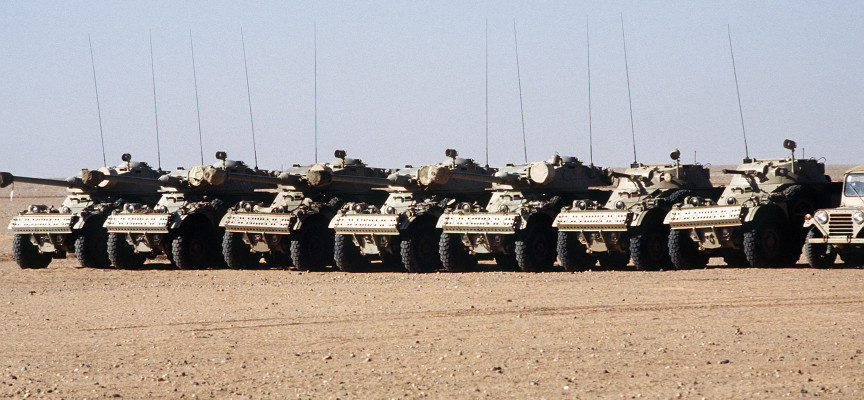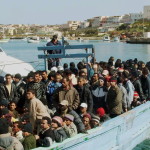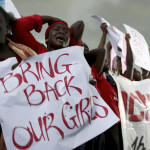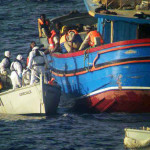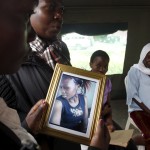Perhaps not everyone knows that, but the largest military operation of the French army – currently in progress – has as its theatre the Sahel region of Africa and aims at fighting terrorism. This is Operation Barkhane, which involves 3000 French soldiers deployed on a large territory for thousands of square miles, from Mauritania to Chad, through Mali, Burkina Faso and Niger. The mission, officially launched on August 1st, 2014, has inherited the legacy of the previous two operations conducted by France in Mali and Chad, respectively called Operation Serval and Epervier.
Stated goal of Barkhane is the fight against terrorism and, in particular, the contrast to the dense network of groups that move with relative ease in a region of porous borders, difficult to control. A war is not without costs, even of human beings: ten French soldiers have been killed since the beginning of Operation Serval (while there are no precise numbers of the victims among the militiamen and civilians).
With this operation, France tries to keep its area of influence in a region considered strategic for the transalpine politics, and even to extend it, with an eye to Nigeria. An interest not only political but also economic (think of the French companies active in the region and to the access to uranium in Niger) but also of security: France has particular interest in preventing the spread of ideologies linked to international terrorism to neighbouring Algeria and the entire Maghreb.
It is in front of these concerns, which could be shared by many states of the European Union, that one wonders where were analysts and scholars when the imposition of the No Fly Zone over Libya was being planned; as a matter of fact, the prelude to the final fall of the Gaddafi regime. Because – after nearly four years – we cannot hide that the collapse of Libya has been an explosive element for other crises in the continent and to the proliferation of those same groups that today France itself is fighting. One might say that the French army is facing that same demon that has helped to strengthen.
Tons of ammunitions and weapons from the Libyan arsenals have, in fact, ended up in recent years in the hands of dozens of groups in Africa and the Middle East. Weapons that could have finished – through Chad and Niger – even in the hands of the militia of Boko Haram.
The Caliphate, established in the Nigerian state of Borno, is spreading its tentacles to neighbouring Cameroon and threatens all countries bordering Lake Chad. The risk is that, as happened with the Islamic State, this can become a pole of attraction or forced recruitment for thousands of young people who will not be given a pen (or pencil) but a Kalashnikov.
A few weeks ago the president of Cameroon Paul Byia invoked the need for international intervention, calling to action that coalition that had – not surprisingly – Paris as its centre. It was May 18th, 2014. Statement of intents to which, perhaps waiting for the outcome of the forthcoming Nigerian elections of February 15th, the international community did not let follow facts, except for the sending in Cameroon of a contingent of Chadian soldiers.
It remains to be seen whether the military intervention remains the only way to fight terrorism or whether the military action, although necessary, should not be accompanied by an action that isolates these groups, beginning with the stopping of weapon supply. Working, first of all, to avoid the dangerous bond between movements with territorial claims and groups linked to the network of international jihadism (as happened in Mali). And, secondly, by eliminating the background of frustration, poverty and lack of opportunities – across the Sahel region – that pushes young people into the hands of those who, for a few dollars, is ready to arm them.
Forse non tutti lo sanno, ma la più grande operazione militare dell’esercito francese – attualmente in corso – ha come teatro la regione africana del Sahel e come obiettivo il contrasto al terrorismo. Si tratta dell’Operazione Barkhane che vede impegnati 3 mila soldati francesi dispiegati su un territorio esteso per migliaia di chilometri quadrati: dalla Mauritania al Ciad, passando per Mali, Burkina Faso e Niger. La missione, lanciata ufficialmente il 1° agosto del 2014, ha raccolto l’eredità di due precedenti operazioni condotte dalla Francia in Mali e in Ciad, denominate rispettivamente Operation Serval e Épervier.
Obiettivo dichiarato di Barkhane è la lotta al terrorismo e, in particolare, il contrasto a quella fitta rete di gruppi che si muovono con una certa facilità in una regione dai confini porosi e difficilmente controllabili. Una guerra non priva di costi materiali e umani: sono dieci i soldati francesi uccisi dall’inizio dell’operazione Serval (mentre non si hanno numeri precisi circa le vittime tra i miliziani e la popolazione civile).
Con questa operazione la Francia prova a mantenere (e con un occhio alla Nigeria anche ad estendere) la sua area di influenza in una regione considerata strategica per la politica transalpina. Un interesse non solo politico, ma anche economico (pensiamo alle imprese francesi attive nella regione e all’accesso all’uranio del Niger) e di sicurezza: la Francia ha particolare interesse nel contrastare la diffusione di ideologie legate al terrorismo internazionale alla vicina Algeria e all’intero Maghreb.
È di fronte a queste preoccupazioni, che potrebbero essere condivise da molti stati dell’Unione europea, che viene da chiedersi dove fossero analisti e studiosi quando si progettava l’imposizione della No Fly Zone sulla Libia; di fatto il preludio alla definitiva caduta del regime di Gheddafi. Perché – a quasi quattro anni di distanza – non si può nascondere come il collasso della Libia abbia rappresentato un elemento detonatore per altre crisi nel continente e per il proliferare di quegli stessi gruppi che, oggi, la stessa Francia si ritrova a combattere. Verrebbe da dire che l’esercito francese si trova a fronteggiare quello stesso demone che ha contribuito a rafforzare.
Tonnellate di munizioni e armamenti provenienti dagli arsenali libici sono, infatti, finiti in questi anni nelle mani di decine di gruppi in Africa e Medio Oriente. Armi che – attraverso Ciad e Niger – potrebbero essere finite anche nelle mani dei miliziani di Boko Haram.
Il Califfato, istituito nello stato nigeriano di Borno, sta allargando i suoi tentacoli al vicino Camerun e minaccia tutti gli Stati che si affacciano sul lago Ciad. Il rischio è che, come avvenuto per lo Stato Islamico, anche questo possa diventare un polo di attrazione o di arruolamento forzoso per migliaia di giovani ai quali non verrà data in mano una penna (o una matita) ma un kalashnikov.
Alcune settimane fa il presidente camerunese Paul Byia ha invocato la necessità di un intervento internazionale, richiamando all’azione quella coalizione che aveva fatto – non a caso – di Parigi il suo centro. Era il 18 maggio 2014. Dichiarazioni d’intenti alle quali, forse in attesa dell’esito delle elezioni nigeriane del prossimo 15 febbraio, la comunità internazionale non ha fatto seguire fatti concreti, fatta eccezione per l’invio in Camerun di un contingente di militari ciadiani.
Resta da capire se l’intervento militare resti l’unica strada per il contrasto del terrorismo o se, l’azione militare, seppur necessaria, non vada accompagnata da un’azione che faccia terra bruciata attorno a questi gruppi, a partire dal rifornimento di armi. Lavorando, prima di tutto, per evitare la pericolosa saldatura tra movimenti con rivendicazioni territoriali e gruppi legati alla rete del jihadismo internazionale (come avvenuto in Mali). E, in secondo luogo, eliminando quel retroterra di frustrazione, povertà e mancanza di opportunità che – in tutta la regione del Sahel – spinge i giovani nelle mani di chi, per qualche dollaro, è pronto ad armarli.
Michele Luppi
www.africaeuropa.it
Latest posts by Michele Luppi (see all)
- How can Europe do that? - 16 aprile 2016
- A raw nerve in european consciousness - 23 luglio 2015
- The cry of the dead of Garissa - 18 aprile 2015

